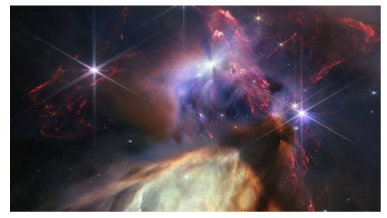Context: Recently, NASA celebrated the anniversary of the James Webb telescope by sharing a new image of sunlike stars being born. The picture is of the Rho Ophiuchi cloud complex, the nearest stellar nursery to Earth.

Image credit: The Hindu
About James Webb Telescope:
- The James Webb Space Telescope is an orbiting infrared observatory that will complement and extend the discoveries of the Hubble Space Telescope, with longer wavelength coverage and greatly improved sensitivity.
- Developed by: NASA with the assistance of the European Space Agency and the Canadian Space Agency.
- Launched in :It was launched in 2021, with the mission duration of 5-10 years
- Location in space: It is placed at Lagrange point 2, approximately 1.5 million km beyond Earth’s orbit around the Sun.
- Size: Webb’s primary mirror is approximately 6.5 metres in diameter, giving it a significantly larger collecting area than the mirrors of the current generation of space telescopes.
- Wavelength: It will provide wavelength coverage from 0.6 to 28 microns (the infrared part of the electromagnetic spectrum).
- Objectives:
- Search for the first galaxies and luminous objects formed after the Big Bang.
- Determine how galaxies evolved from their formation until now.
- Observe the formation of stars from the first stages to the formation of planetary systems.
- Measure the physical and chemical properties of planetary systems, including our own Solar System, and investigate the potential for life in those systems.
News Source: BBC
![]() 13 Jul 2023
13 Jul 2023
